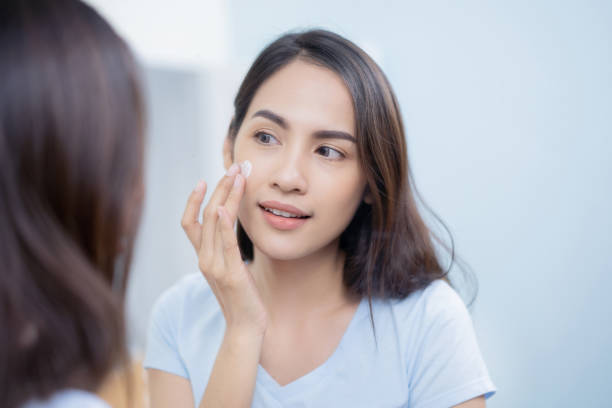Soap has been in use in households around the world for thousands of years, though the soap in use today differs greatly to that which was created many years ago. The first soaps were made using animal fats and vegetable oils. Today’s soaps have many different chemical additives used to enhance their marketing appeal. What effects do these additives have on our skin? What are the long term effects? How was soap first made and how has it evolved into what it is today?
Several archeological findings indicate that soap was being used as early as 2800 BC by the Babylonians, Phoenicians and Egyptians (Garzena 2002). There are varied stories as to how soap first came into being but the basic theory is the same. It is not hard to imagine how years ago when cooking was done over an open fire, left with a greasy pot the cook would look for something to help rub the grease off. Adding a handful of ashes and left to soak, it is suddenly discovered that the fat washes off easily. Roman legend states that soap was named after Mount Sapo, an area where animals were sacrificed. Rainwater mixed with the animal fats and wood ash and washed down in the clay soil of the Tiber River. The local village women found that by using the clay it made their washing easier and cleaner.
In the middle ages the first small scale soap factories were set up in France and England. It was not an easy product to make. Obtaining the potash (water in which the ash was macerated, also known as lye) was a long and complicated process and often gave inconsistent results. In 1791 Nicholas Leblanc discovered a process of preparing a soda made from common salt to be used in place of the ash. This process along with the importation of coconut and palm oils made the manufacture of soap easier and more and more soapmaking centres were founded. In Britain in the 19th Century taxes were imposed on the manufacture of soap and soapmakers were granted a monopoly for soap production in return for a guaranteed price per ton. This tax was abolished in 1852 and soap then became more widely available.
Many of the original soap manufacturers are now household names. William Colgate’s “Cashmere Bouquet” was introduced in 1872. BJ Johnson created “Palmolive” using palm and olive oils and cocoa butter. Although these soaps retain their original names they are somewhat different to the original product.
Soaps today are mass produced for economical reasons and at the cost of quality. The natural glycerine that occurs in the soapmaking process is removed from the soap and used in moisturisers and cosmetics where it draws a higher price. Handmade soaps made using the cold process method retain this glycerine as well as the natural properties of the oils used. Many of the additives used in the manufacture of soaps today have no other value other than to improve aesthetics and add to their shelf life. EDTA is listed as an ingredient in many soaps. It is a chelating agent which reduces the amount of trace metals in solution giving a clearer product, preserving colours, flavours and textures, important marketing factors. It is a known skin and eye irritant and suspected of being a mutagen. Many different synthetic colours are used in soap manufacture, many of which are derived from coal tar. Research has shown that almost all coal tar colours cause cancer in mice when injected into the skins of mice. Natural colours such as annatto, carotene, chlorophyll and turmeric are very unstable in soap, therefore not practical from a marketing point of view. Propylene glycol is another additive used widely in soap. Much research has been undertaken to create enhancers that will help the skin absorb the active ingredients in skin care products (Rajadhyaksha, V.J. & Pfister, W.R. 1996). Propylene glycol is one of these enhancers. It is said to permeate the skin better than glycerine and less expensive. The US Food and Drug Administration proposed a ban on propylene glycol in 1992 because it was not shown to be safe and effective for its stated claims in head lice formulations. However based on available data the Cosmetic Ingredient Review Panel considered it safe for use in concentrations up to 50%. Propylene glycol is also a known skin irritant as is triclosan which is used in many antiseptic soaps.
It can be argued that soap is not on the body for any length of time and quickly rinsed off. However many people have immediate allergic reactions when using soap indicating that the chemicals do not need to be on the skin for any length of time to cause a problem. Just how permeable is our skin? Rubbing fresh garlic on your feet will have you tasting it within about 20 minutes. Straehli first demonstrated the permeability of the human skin in 1940 when he found that different essential oils took different time periods to appear on the breath after application to the skin (Farrow 2002 p 46-47).
Although our skin is said to create a barrier it is a permeable barrier and there is no long term research available to indicate what adverse effects many of these chemicals may have on the human body. Handmade soaps may be scented with pure essential oils however they may also be scented with fragrant oils. Many handmade soaps contain natural colours but may also contain synthetic colours. Therefore it is important if you decide that you want to use a more natural soap you must find a soapmaker who can tell you the exact ingredients in their soaps. What a person chooses to use on their own skin is their choice. Having always been interested in natural soaps, I now make and use my own soaps which are made with vegetable oils, natural colours and pure essential oils. This is my choice. What do you choose?
Farrow, K. 2002, Skin Deep, Thomas C. Lothian Pty Ltd, Vic.
Rajadhyaksha, V.J. & Pfister, W.R. 1996, Oxazolidinones: optimizing delivery of active ingredients in skin care products, Vol. 158, Drug & Cosmetic Industry pp. 36




